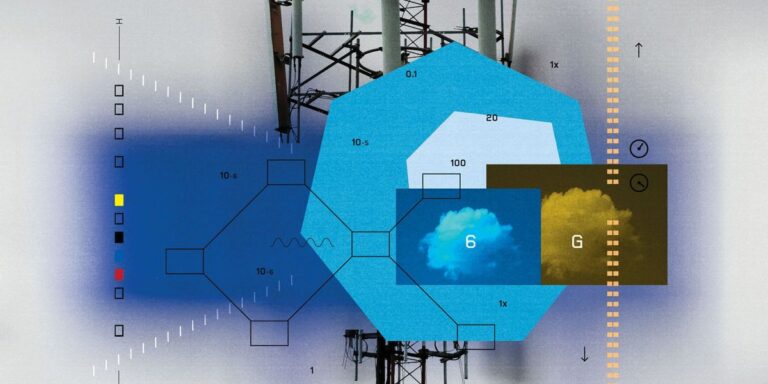This article is part of our exclusive IEEE Journal Watch series in partnership with IEEE Xplore.
As the telecommunications industry slowly rolls out 5G networks around the world, researchers are starting to look at technologies for the next generation, 6G networks. One vision for 6G is to use new cellular frequencies that range from 100 gigahertz to terahertz. The problem with this vision is that gases in the atmosphere absorb these radio waves, so signals transmitted at these frequencies can become useless after just a few meters.
But what if we could turn that disadvantage around and use it to address a pressing global problem? A new paper published October 6 in the journal Nature Communications suggests that: IEEE NetworkThe researchers show how future 6G networks could be used to measure emissions that harm both the climate and human health.
“If a terahertz signal is absorbed, we can tell which molecule is absorbing it,” says Josep Jornet, a professor of electrical and computer engineering at Northeastern University in Boston, “so we have the infrastructure to turn a problem of signal absorption into an opportunity to tell us what gases are in the air and in what concentrations.”
“What we’re proposing in this paper is radio spectroscopy.” —Josep Jones, Northeastern University
Climate change and air pollution are increasingly pressing issues, with rising emissions from the industrial and agricultural sectors, says Sasitharan Balasubramaniam, a computer science professor at the University of Nebraska-Lincoln. At the same time, there’s the idea of 6G networks operating in the sub-terahertz and terahertz ranges, which are ideal for gas detection. “It makes sense to merge the two.”
Different molecules absorb different electromagnetic radiation frequencies depending on their molecular structure – for example, carbon dioxide, ammonia and ozone all have their own unique absorption characteristics.
Spectroscopy, a technique used to decipher the molecular structure of chemicals, is based on this fact: it involves irradiating a chemical or biological sample with a broad spectrum of frequencies, measuring the absorption at each frequency, and analyzing the series of absorption peaks that appear in the spectrometer readout.
“What we’re proposing in this paper is radio spectroscopy,” Jornet says. He, Balasubramaniam and their colleagues used radios developed at Northeastern University that operate at frequencies between 100 and 300 GHz. The radios have enough power to transmit data over distances of a few tens of meters, and lower power for distances up to 2 kilometers. “There are radios that can go up to 1 to 1.1 terahertz, but the power you get at these frequencies is very low, probably only enough for a foot or so.”
The researchers compared the absorption profiles of different gases obtained from an online molecular absorption database with sensing data of different gas samples obtained from a sub-terahertz transceiver in sensing mode. To measure radiation absorption, they used two techniques: a simple path loss data analysis that measures the signal loss between the transmitter and receiver; and a power spectral density approach that measures the power of the signal versus frequency. They then used machine learning algorithms to identify the absorption patterns and match them against the online database.
They were able to accurately detect the greenhouse gases carbon dioxide, methane, nitrous oxide, sulfur dioxide, a by-product of chemical plants that is harmful to health, and other toxic gases such as ammonia and ozone. The method was also able to detect related gases in mixtures, says Balasubramaniam. “What was interesting was that when we mixed different gases in different ratios and gathered enough data to look for patterns, we were able to pinpoint some of those gases accurately, even over different distances and concentrations.”
6G networks are still years away. But there would be economic benefits to using the same infrastructure for both communication and sensing, says Mehmet Can Vran, a professor of computer science at the University of Nebraska-Lincoln and co-author of the paper. Adding gas sensing to terahertz infrastructure would require an additional layer of signal-processing software at a small cost to telecom operators. There would also be benefits in the agriculture sector, where monitoring and reporting toxic emissions from livestock facilities is under discussion.
“If regulations come into force, they will impose a huge burden on producers,” Vran says. “Some of the gas sensors that this research replaces are very expensive, but with a terahertz system like this, the same infrastructure can be used for multiple purposes, reducing costs and increasing adoption.”
This article appears in the February 2024 issue as “The Future of 6G Climate Monitoring.”.”
From an article on your site
Related articles from around the web


